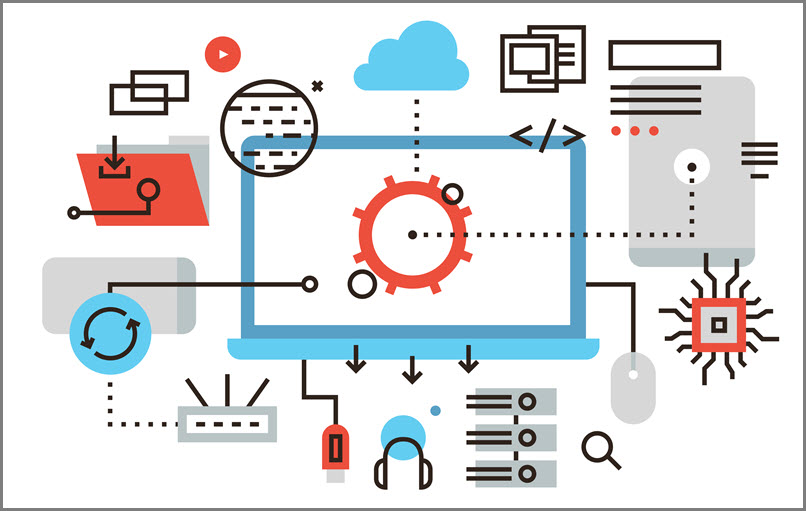
What is DevOps, actually?
DevOps methodology made a huge difference in the way IT engineers do the software development and maintenance. Small-to-medium businesses and large enterprises undergo the digital transformation and begin practicing DevOps workflows. But what is DevOps actually? We will provide the definition of DevOps and explain the true DevOps meaning for your business.
As defined in Wikipedia, the main goal of DevOps approach is providing a combination of software delivery automation (Dev) and IT operations (Ops) techniques to speed up the software delivery lifecycle. DevOps is a practical implementation of Agile methodology principles, which ensures new features, patches and backups are delivered on time, while keeping the product or service operating according to the business goals set.
To better explain DevOps meaning, we will have to break down this DevOps definition to components and explain each one separately.
DevOps is about automation of operations — and more
Routine operations like creating a testing environment or configuring a code delivery pipeline take lots of time but are not very rewarding or interesting. At the same time, they must be done thoroughly, as an error made there can be very costly for the company. Automating such IT operations is a large part of what DevOps is all about.

There are three important DevOps principles: CI, CD and IaC.
- CI is for Continuous Integration. All the new code is continuously integrated into the master trunk after successfully passing automated unit tests. This means there are no long branches and Git code commits are done as often as possible.
- CD is for Continuous Delivery. All the routine processes are automated in a way to minimize the human effort required to do them. So-called CD pipelines are configured using software like CircleCI, GitLab CI, Jenkins, Ansible, etc.
- IaC is for Infrastructure as Code. The cloud infrastructure is built and managed using Terraform and Kubernetes manifests, Chef, Puppet, Ansible playbooks and other configuration management tools. Servers are cattle, not pets. They are to be provisioned, managed and slain without remorse as the need arises.
When deleting an instance and reloading it from scratch is faster and simpler than trying to restore it after crash, infrastructure maintenance becomes a road to perfection, not a constant firefighting.
Conclusions on what is DevOps
This brief description can only scratch the surface of what is DevOps. It is much more than a combination of tool for automation of processes. It is also a culture of zero blame, a culture of inter-department collaboration, an understanding what you actually NEED to do in order to get what you WANT. A DevOps company is a team of like-minded individuals with decent experience in things like:
- cloud infrastructure management and optimization,
- lift-and-shift transition to the cloud from the legacy systems,
- migration between clouds,
- building CI/CD pipelines for software delivery and new feature updates,
- cloud monitoring, alerting, logging and analysis,
- building infrastructure for blockchain solutions
- implementing serverless computing, edge computing, IoT,
- training ML models and AI algorithms, etc.
Thus said, working with a Managed Services Provider is one of the best ways to learn firsthand what does DevOps mean and reap the benefits of this approach!